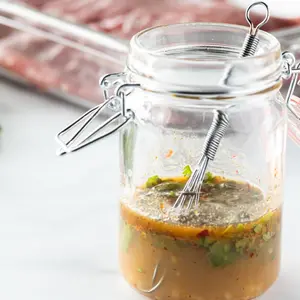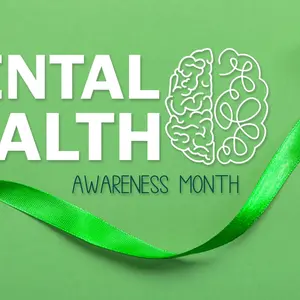

Food, Farming and Nutrition

Food, Farming and Nutrition
Nutrition for Eye Health
For more than thirty years we have become increasingly concerned with the health of our bodies, aware of the benefits of exercising, eating nutritious foods, and taking the right kinds of vitamins and supplements. We have spent endless hours in the gym, trying to improve our bodies, get stronger, leaner, and thinner. We are inundated every day with one news report or another, which dis-ease has taken the lead in being “the number one killer” of men, or of women.
The information highway is filled with articles, blogs, and advice on how to care for every possible area of health and well-being. And we use the internet, we self-diagnose, and we see our doctors with a clearer understanding of how natural remedies and pharmaceuticals work. We all want to know how to avoid “the number one killers.” But how many of us think about or pay attention to the health of our eyes? Eye health is not something the media is throwing at us daily, nor is it something devastating to our well-being unless it affects our sight. As we age, it becomes obvious that our sight is vital to our quality of life. Which begs the question, what can I do to take care of my eyes in addition to seeing my eye doctor every six months?
So, what about carrots? Everyone “knows” that carrots are good for your eyes, typically because their mom told them so! However, eating carrots, while they have excellent nutritional value, do nothing to influence eyesight and have only minimal effect on eye health in general. It made sense that the beta-carotene in carrots, which converts to vitamin A is important in eye function since vitamin A is the molecule in the retina which converts light to nerve impulses. However, if the body has enough vitamin A (which most of us in the US have), there is no reason for the body to convert more beta-carotene to vitamin A. The body knows what it needs and what it needs is lutein and zeaxanthin.
What about exercise? Yes, it’s true: exercise even helps the health of our eyes. It plays an essential part in overall circulation to the eye and to the quality of blood vessels feeding the eye. Not to mention, regular exercise keeps blood sugar under control helping to ward off diabetes. There are many eye-related problems associated with diabetes such as swelling of the eye lens, thereby changing your ability to see. Blurred vision can also be more serious. For example, unmanaged blood sugar and even diabetes that is controlled by medication can still cause cataracts, glaucoma, and retinopathy.
The retina in particular is susceptible to oxidative damage. Oxidative stress coupled with elevated sugar concentrations in the diabetic eye has also been postulated in the development of diabetic retinopathy.
Many companies produce several supplements that can potentially combat the catastrophic effects of free radical damage and oxidative stress on eye metabolism. Naturally, our bodies create enzymes to help this process such as superoxide dismutase and catalase. However, there are also several dietary supplements that support the health of our eyes by reducing the onset of potentially serious diseases. Oxidative stress and free radical damage, particularly as we age, play a significant part in the overall health of our eyes.
The dietary supplements to strengthen eye metabolism include lutein, zeaxanthin, and black currant. Lutein is a carotenoid (a family of brightly colored pigments in plant foods) and research suggests that lutein supports visual function and serves to protect the health of the eye tissues as we age. Lutein is concentrated in the yellow macular pigment, and zeaxanthin is present in the center of the macula. Though lutein is a carotenoid, it does not supply vitamin A activity to the body. Lutein and zeaxanthin are closely related in that they are both carotenoids, and they are better than their relative, beta-carotene, especially under normal oxygen conditions. Lutein and zeaxanthin are both found together in foods such as green vegetables: kale, broccoli, and spinach. Because the levels of carotenoids tend to diminish as we age, it’s vital to replenish through dietary means.
The yellow colored carotenoids are found within the macula lutea (the yellow spot in the center of the retina) and in smaller amounts throughout the retina. Scientists have come to believe that lutein and zeaxanthin supply the density of macular pigment thereby protecting the inner retina from light-induced damage. The macular pigment is the part of the eye, which typically absorbs and filters up to 60% of damaging ultraviolet blue light. By supplementing with lutein and zeaxanthin we are not only increasing the opacity of the eye lens, we are neutralizing free radicals. Further, according to a study published in JAMA (the Journal of the American Medical Association), people who regularly eat foods rich in lutein, such as spinach and kale, are more likely to maintain optimal vision.
Lastly, the additional benefits of lutein and zeaxanthin, like other carotenoids, appear to influence the growth and repair of cells. Moreover, a 1999 Harvard epidemiological study showed that lutein was one of the nutrients associated with better breast health. Both supplements, according to several other studies, suggest that they are helpful in protecting cells of the skin, cervix, breast, and large intestine.
Black currants are edible berries of a shrub that grows to be about five feet in height and grows best in temperate climates usually at latitudes greater than 35 degrees. Black currants berries are used in juices, jams, and sauces. Historically, black currants have been used to impact human health since the Middle Ages in Europe and have a long history in Russia and northern North America. Black currants have been used to treat swellings, and other ailments with the kidneys, uterine tract, and stomach.
Black currants have four times the amount of vitamin C than the equal weight of oranges, plus an equivalent amount of potassium as bananas. They surpass the blueberry in anthocyanin content. According to Eddie Shiojima, PhD, “the pristine mountain water, fresh air and harsh growing conditions in New Zealand create wonderful black currants and it is believed that the high amount of UV radiation in New Zealand leads to increased levels of anthocyanins.” Black currants are also rich in minerals such as calcium, iron, magnesium, and zinc.
So what makes this super fruit so beneficial for eye health? First, the amount of anthocyanins is similar to the structure of flavonoids or bioflavonoids, another important class of phytonutrients. According to many studies, anthocyanins can reduce inflammation and aid in a variety of health ailments. Two anthocyanins, delphinidin-3-rutinoside and cyanidin-3-rutinoside, which are make up more than 80% of black currant anthocyanins, have shown specific beneficial effects for eye health. Both types of anthocyanins promote relaxation of the eye and increase circulation to the eye. Delphinidin-3-rutinoside has shown specific activity in relaxing the ciliary smooth muscle of the eye. Two studies conducted in Japan have suggested increased blood flow to the optic papilla and the reduction of eye fatigue when consuming black currant. Like lutein and zeaxanthin, black currant has enormous benefit against oxidative stress. Together, the three supplements provide a powerhouse full of protective benefits for our eyes.
Jeffrey Anshel, OD, FAAO
President, Ocular Nutrition Society
Office: Poinsettia Vision Center, Carlsbad
This article is reprinted with permission from the author, Christa Orecchio, CN, HHC, and first appeared in The Whole Journey.


 By
By







